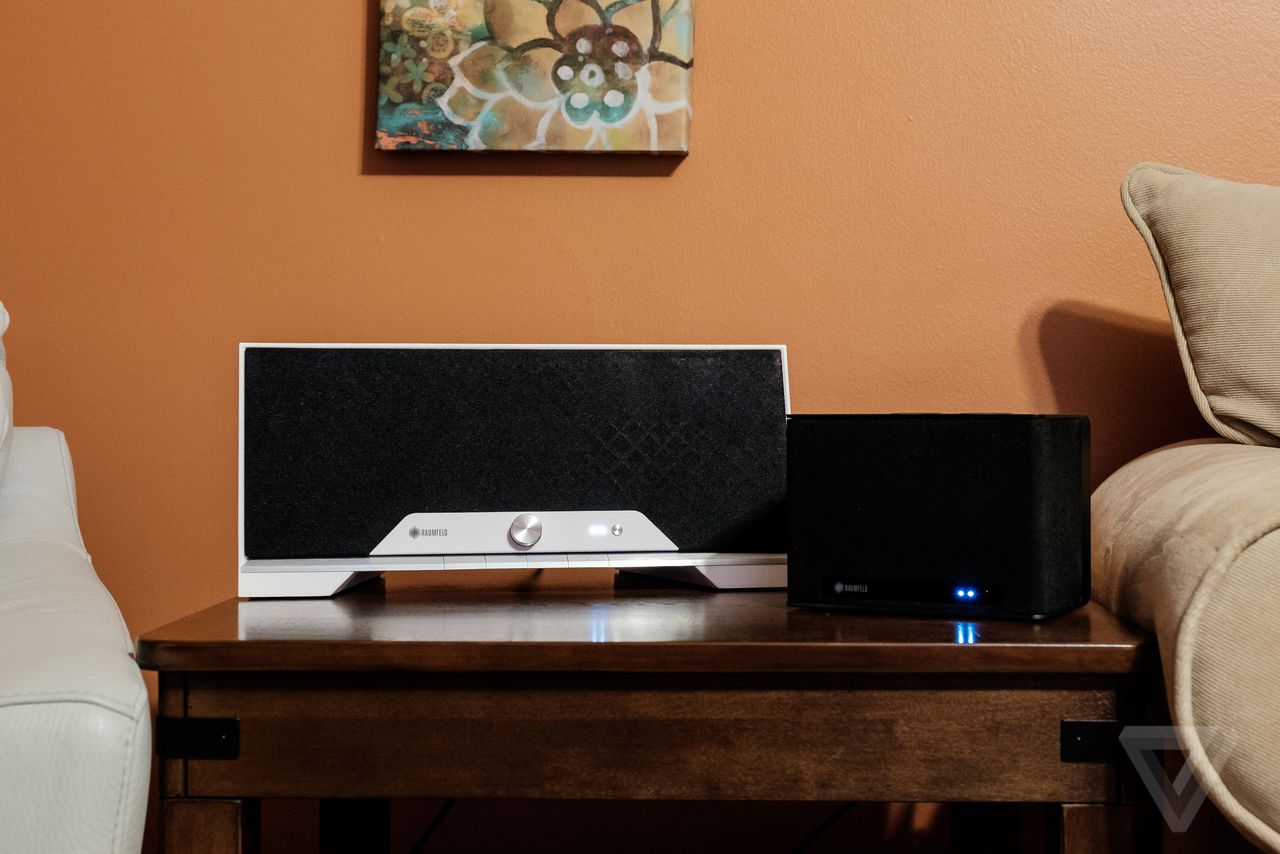
In the world of multi-room audio, one name has dominated the industry for years. Sonos’ speakers have been the go-to solution for getting sound in every room of your home without any pesky wiring or advanced installation. The company’s dominance is so great that other companies have had trouble making a dent in this space — even Apple reportedly killed a Wi-Fi speaker system that Beats was working on when it acquired the company last year.
But of course that doesn’t mean other companies won’t stop trying, and the latest threat to Sonos is Raumfeld. The German company has been selling its speakers in Europe for a number of years, but following its announcement this summer, it is just now making them available to the US. Like Sonos, the Raumfeld system is a multi-room wireless solution that uses Wi-Fi to get music from your phone to the speakers. The company has a complete range of speakers, from a $250 entry-level model to a pair of standing speakers that sell for $2,400, which is considerably pricier than even the most expensive Sonos option. Raumfeld’s goal is to attract the more sophisticated listener that doesn’t mind spending more for a good set of speakers.
I’ve been testing the $249 One S and $599 One M in my home (a set that you can preorder in a bundle package from Raumfeld’s website at a discount for $689), comparing them against the Sonos Play:1 and Play:5, respectively. Raumfeld’s speakers have a different aesthetic than Sonos, with sharper angles and a more mature look than Sonos’ soft, rounded designs. Some might even say they are old fashioned, with physical knobs that are reminiscent of hi-fi systems from decades ago, but I like their design. Sonos’ speakers seem to be designed to blend into the background, while Raumfeld speakers can act as the centerpiece of your home entertainment system.
/cdn0.vox-cdn.com/uploads/chorus_asset/file/4286225/raumfeld-one-speakers-review-5.0.jpg)
The One S is most similar to Sonos’ hugely popular Play:1 in both size and sound. It’s slightly more expensive than the Play:1, but for that price you get splash resistance, making it an ideal bathroom or kitchen speaker. I placed it in my own bathroom and found it had no issue filling the space with rich sound. Just like the Play:1 (which happens to be my favorite Sonos speaker, even over the more expensive Play:3 and Play:5), the One S punches well above its size and weight when it comes to sound quality and output. If you need this thing to get loud, it will oblige without hesitation. Also like the Sonos, two One S units can be paired into a stereo configuration, for an even better experience.
/cdn0.vox-cdn.com/uploads/chorus_asset/file/4286239/raumfeld-one-speakers-review-2.0.jpg)
RAUMFELD’S SPEAKERS BOTH LOOK AND SOUND GREAT
The more expensive One M is a one-to-one competitor to Sonos Play:5, with multiple drivers and more power than the smaller speaker. It adds features like a rotary volume dial and downward firing subwoofer. Sound from the One M is just as impressive as the One S, and its bass response is more than you might expect from such a compact speaker. I happen to like the One M’s sound better at low volumes compared to the new Play:5, but both speakers sound really great. One thing I wish Raumfeld would add is a play / pause button so I could quickly silence the speaker without having to power it off.
One of the things that makes Sonos such an attractive option for a home speaker system is that it works with nearly every music service in use today. Here is where Raumfeld comes up drastically short: the only services it supports here in the US are TuneIn radio and Tidal, with limited support for Spotify. That means it won’t work with Apple Music, Google Play Music, Amazon Music, Soundcloud, or any other service you might want use with it. Raumfeld does offer the ability to plug in a hard drive of your own music to one speaker and access it throughout your home, but I don’t think most people looking for this type of system are interested in doing that. Certain Raumfeld speakers also offer a line-in option, so you can plug in a turntable and play LPs through them if you’re so inclined.
/cdn0.vox-cdn.com/uploads/chorus_asset/file/4286259/raumfeldapp3up.0.png)
While TuneIn and Tidal can be controlled with Raumfeld’s app and support the full multi-room experience, Spotify is only available on one speaker at a time and you must use Spotify’s app to control playback. (That might not be the worst thing: Raumfeld’s apps on both iOS and Android are very bare bones and not particularly user friendly.)
LIMITED SUPPORT FOR STREAMING MUSIC SERVICES IS RAUMFELD’S BIGGEST WEAKNESS
The lack of services available on Raumfeld’s system is its achilles heel, hampering an otherwise compelling system. The speakers sound great, look good, and are a solid alternative to Sonos if you just want something different. But if you can’t get the music you want to play on them, they aren’t worth your time or investment. Raumfeld can add more options over time (and in Europe, it does have more available), but for now, if you want a multi-room wireless speaker system, Sonos is still the way to go.
[“source-theverge”]




